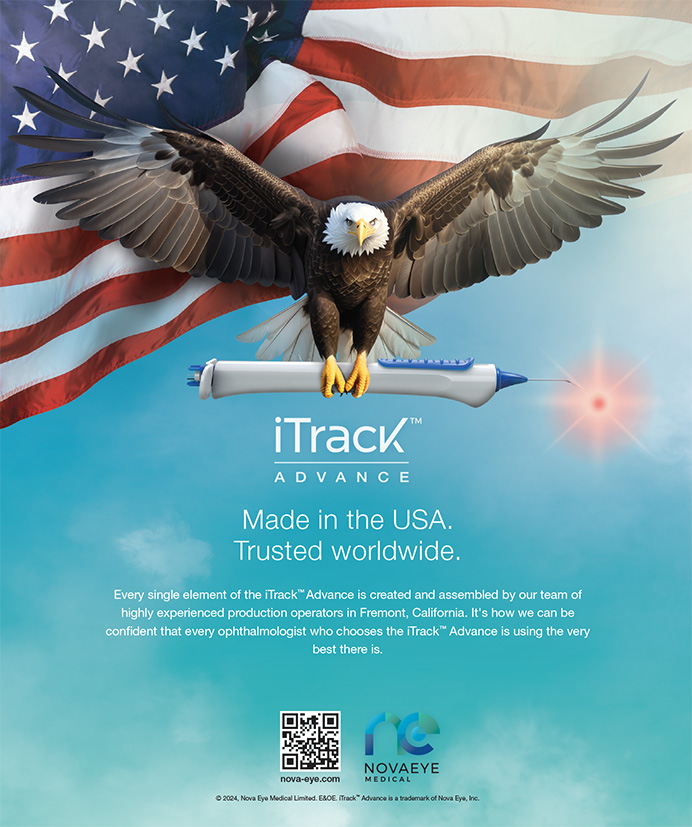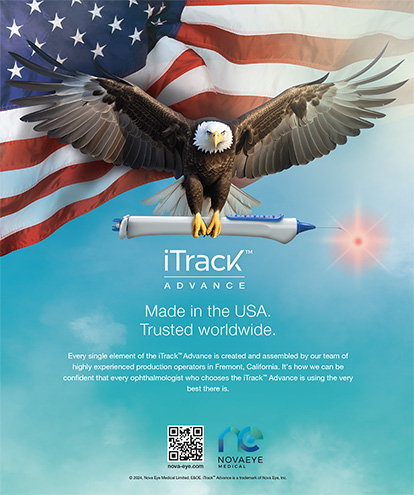Cataract Surgery | Sep 2005
Removing Subincisional Cortex
An overview of surgical options.
Steven H. Dewey, MD
The removal of subincisional cortex remains a challenge in cataract surgery that, ironically, seems to increase in magnitude as refinements in technique improve the outcome of the procedure. Obviously, the greatest impediment is the natural configuration of our instruments for working directly in front of the incision, with that section of cortex tucked neatly beneath it. Longer tunnel incisions seal well, which decreases the likelihood of endophthalmitis and improves astigmatic stability, but they sequester the subincisional space to an even greater extent than shorter incisions. Smaller capsulotomies that overlap the optic's edge decrease posterior capsular opacification, improve refractive stability, and probably decrease dysphotopsia. They also provide another barrier to accessing cortex in the subincisional space, however. The question, then, is how can one best attack subincisional cortex?
HYDRODISSECTION
I. Howard Fine, MD, of Eugene, Oregon, deserves credit for advancing the concept of hydrodissection as a means of improving both nuclear and cortical removal during phacoemulsification. Although I have had great success using this technique to remove the cortex opposite the incision after phacoemulsification, I still find that a considerable amount of subincisional cortical material remains. The problem is that the wave of fluid must pass along a very precise plane between the cortex and capsule, and the cortex frequently adheres more to the capsule than to itself. As a result, the wave permeates deep into the lens while the subincisional cortex remains intact and adherent.
If one wishes consistently to ease the removal of the subincisional cortex, then performing hydrodissection in the subincisional space first makes sense. Using a simple J-cannula in this manner can free the subincisional cortex and leave the stubborn cortex opposite the incision to be removed by standard, automated I/A. Unfortunately, this technique is not always as successful as one would like. A more useful instrument than the J-cannula in this region is the hydrodissection cannula angled at 90º that David Chang, MD, of Los Altos, California, designed (Chang right-angled cannula; available from Katena Products, Inc., Denville, NJ, and Mastel Precision, Inc., Rapid City, SD) (Figure 1). This instrument has the advantage of hydrodissecting in the subincisional space and then rotating the nucleus without additional manipulations.
BIMANUAL I/A
Once the nucleus has been extracted, probably the best way to remove cortex using simple I/A devices is with a bimanual technique. Angled I/A cannulas have been in use for quite some time, but they require the placement of an aspirating tip into a region of poor visibility. “Steerable” I/A enjoyed a brief stint as the new technology. Although instruments of this type have largely been relegated to back-room storage, they did demonstrate that the surgeon can successfully use a soft, silicone I/A tip to remove cortex in a poorly visualized area. Compared with reusable instruments, this choice is the most expensive on a per-case basis of those discussed in this article, because the tip can only be safely used for relatively few surgeries. Video demonstrations of this soft tip incidentally grabbing the capsule without damage are certainly compelling, however.
Bimanual techniques allow the alternation of I/A handpieces between the two incisions. For visualization, this technique has significant benefits, because one may use the irrigating handpiece to retract the iris and capsule as needed to perform aspiration in the subincisional space (this technique cheats a bit, because the true subincisional space changes as the instruments alter positions). I frequently have problems with “oar-locking” when attempting this maneuver. Kenneth Rosenthal, MD, of Great Neck, New York, developed a Vespa incision, which is essentially shaped like a wasp or an hourglass. His innovation was to make the external and internal ostia of the microincision for bimanual phacoemulsification larger with a narrower intervening waist. This construction has dramatically reduced the incidence of oar-locking during manipulation of the instruments for removing subincisional material.
MY TECHNIQUE
As an alternative or supplement to aspiration techniques, my approach to subincisional cortex has been relatively different. Instead of aspirating, I knock loose the subincisional cortex with irrigation. This approach has the distinct advantage of being able to free up smaller strands of cortex that are too small to be aspirated by a standard handpiece. At first, I found my technique to be a matter of improved convenience. I was inspired, however, by the work of David Apple, MD, of Salt Lake City early in this decade regarding the correlation between retained cortex after cataract surgery and increased rates of posterior capsular opacification. Using Miyake-Apple specimens, we found my technique to be consistently successful at thoroughly removing cortex to the equator.1
In essence, I use a J-cannula to irrigate the cortex, not just out of the subincisional space, but even opposite the incision. With vigorous hydrodissection, I find that little cortex remains after cataract surgery. It is typically a thin layer that is relatively easily stripped away with irrigation, but it is perhaps too thin to aspirate successfully. I use a 26-gauge McIntyre-Binkhorst J-cannula on a 5-mL syringe loaded with BSS. This cannula has a specific flaring of the J-tip that is not parallel to the cannula's shaft. After placing the tip of the cannula against the capsule, I flush the cortex out of the capsule and, in most cases, out of the eye in one simultaneous motion.
For me, this technique has been irreplaceable, and I use the J-cannula in at least 80% of my cases on any given day. Usually, this approach allows complete cortical removal, especially of the subincisional material, within 25 seconds from the removal of the phaco handpiece.
CORTEX AND LENS IMPLANTATION
Whether to remove the cortex before or after implanting the IOL remains controversial. Implanting the IOL first protects the posterior capsule, especially if one is using a standard, angled I/A cannula. The disadvantage is that the IOL and its haptics can be a physical barrier to removing cortex. An older technique from Harry Grabow, MD, of Tampa, Florida, involved placing the viscoelastic cannula under the layer of cortex that remained after nuclear removal. By inflating this space with viscoelastic, he could separate the cortex from the capsule and then place the IOL in this space prior to cortical removal. Of course, one can rotate the IOL to dislodge the cortex at the equator as needed. The older, rigid, single-piece IOLs with PMMA haptics were particularly well suited to this task. The advances in foldable lens technology (eg, three-piece designs and flexible, single-piece designs) make this technique a bit less successful.
CONCLUSION
Subincisional cortex presents several challenges, many of which are of the surgeon's own creation. Consistency is the goal, and the best strategy in removing this material is an individual approach based on one's own talents and preferences. Much like other problems in medicine, the diversity of available solutions points to the absence of consensus on a single solution. n
Steven H. Dewey, MD, is in private practice with Colorado Springs Health Partners in Colorado. He states that he holds no financial interest in the products or companies mentioned herein. Dr. Dewey may be reached at (719) 475-7700; sdewey@cshp.net.
1. Dewey SH, Apple DJ, Werner L. Cortical removal by J-cannula irrigation to reduce posterior capsule opacification. Video presented at: The AAO Annual Meeting; November 11-14, 2001; New Orleans, LA.


